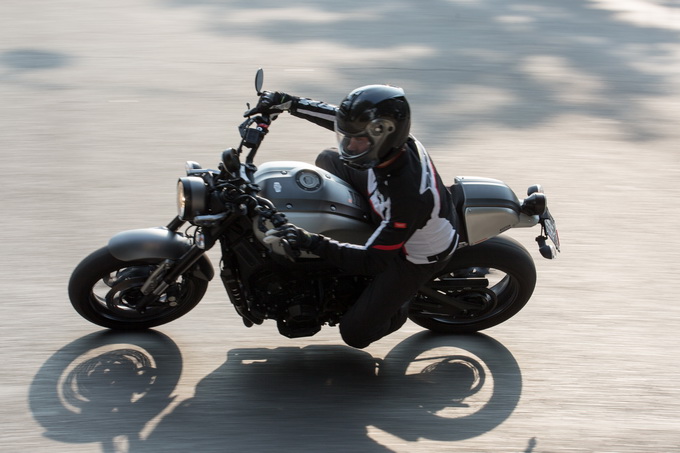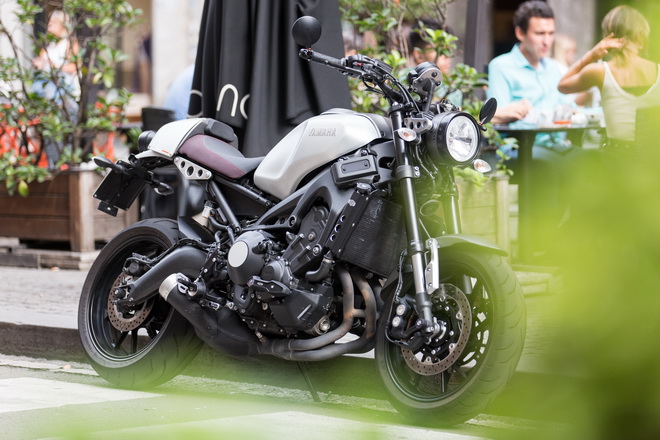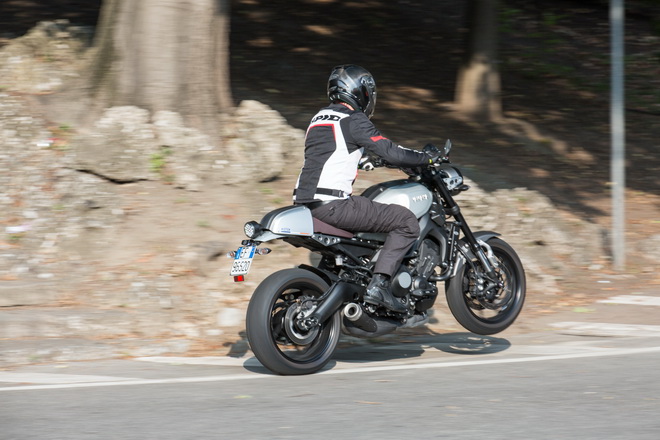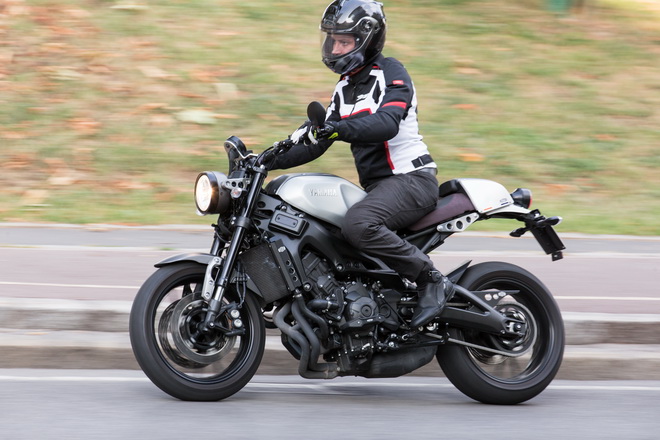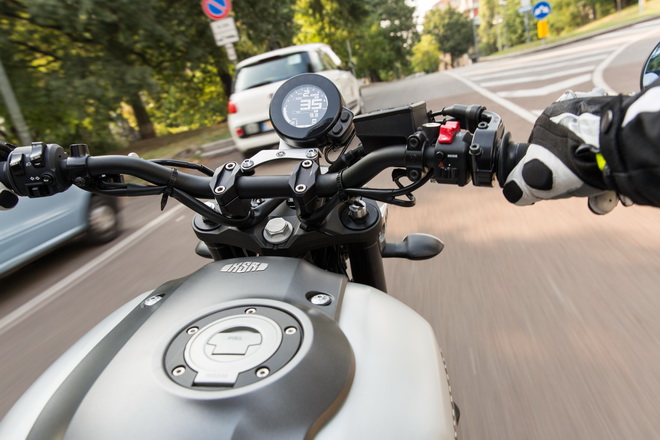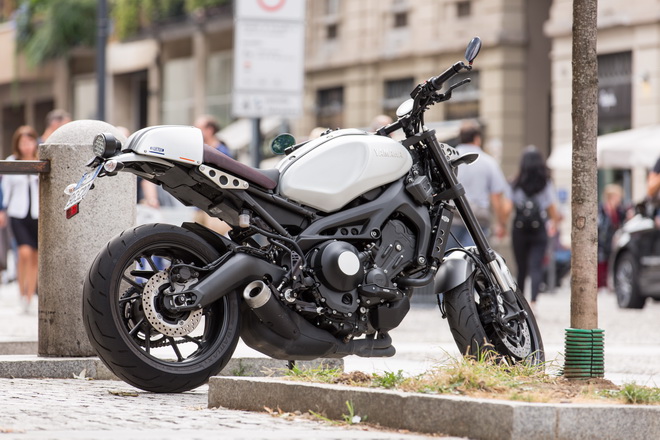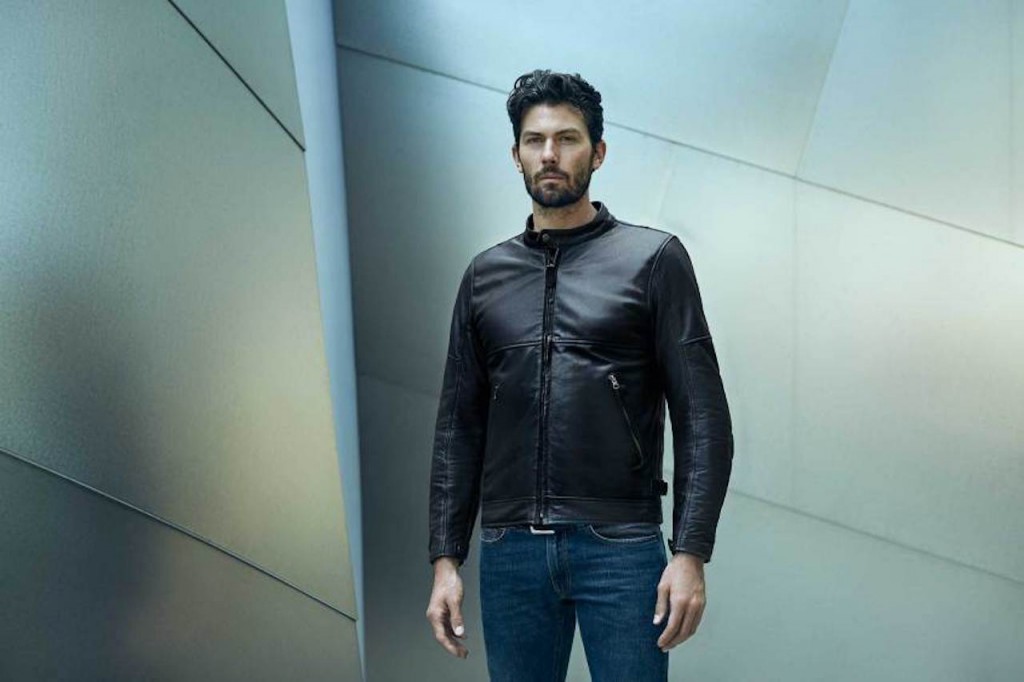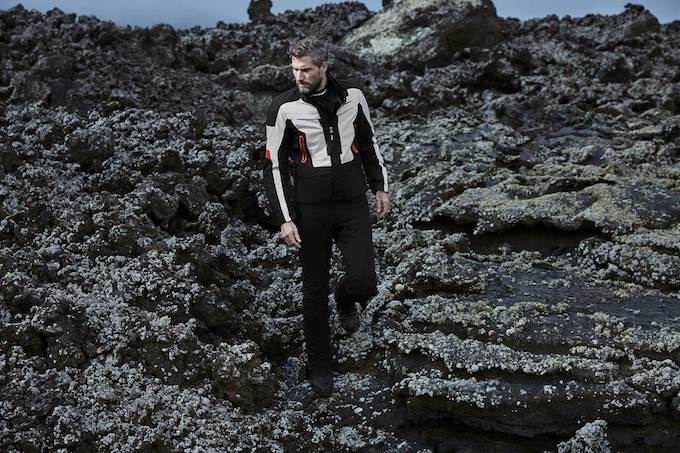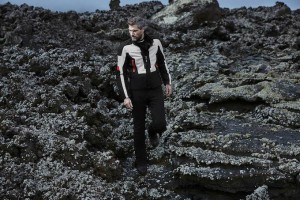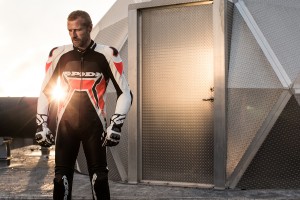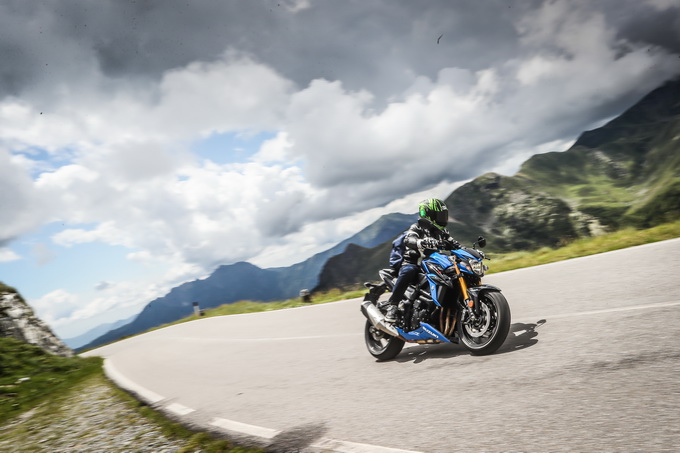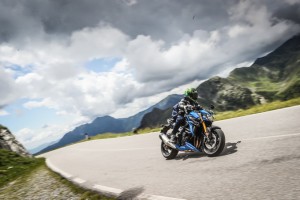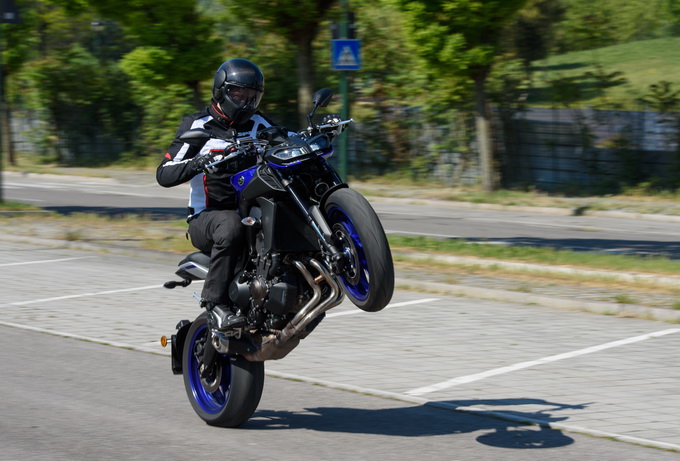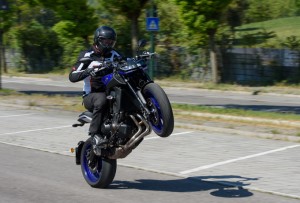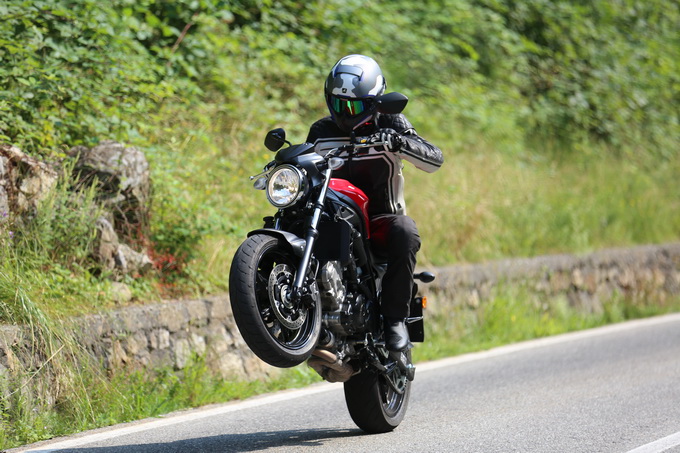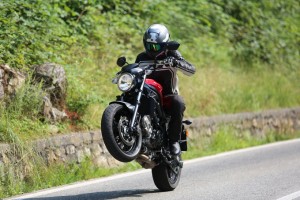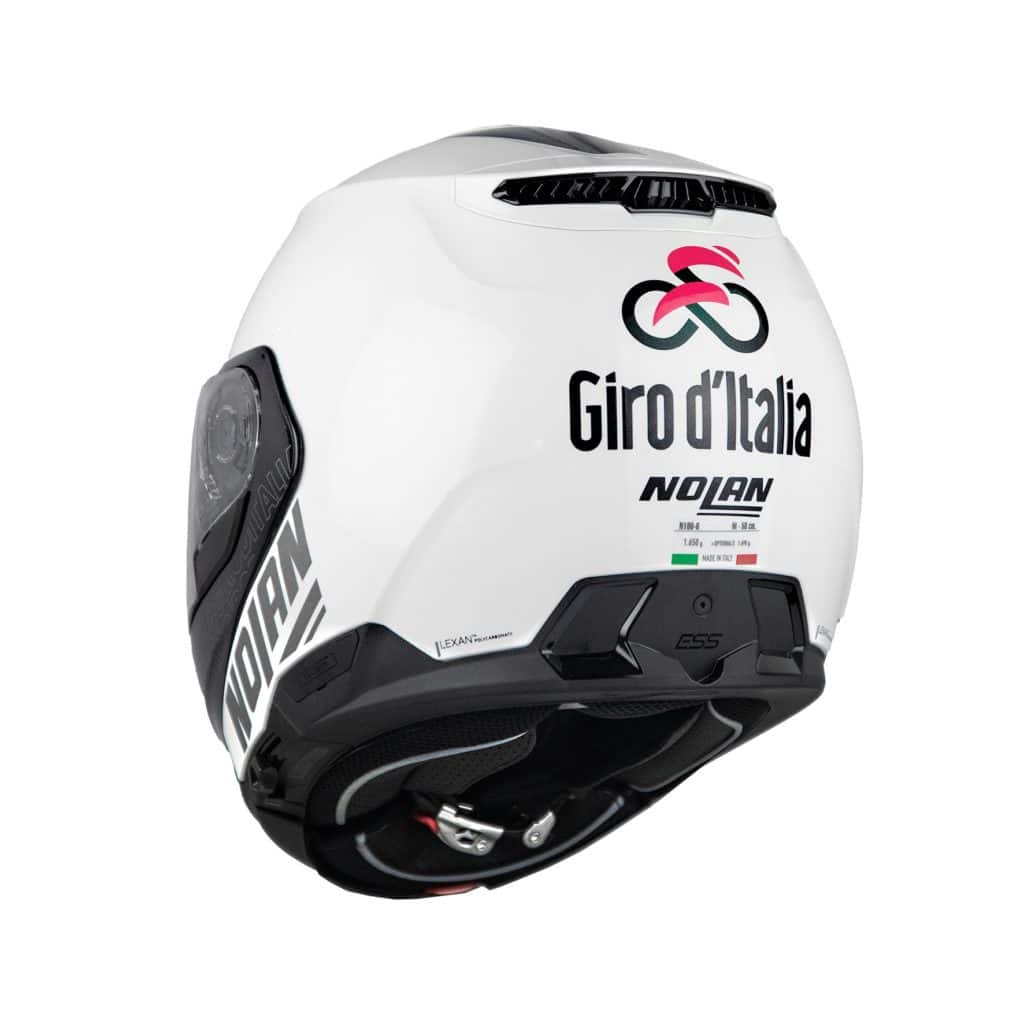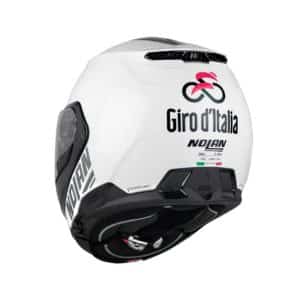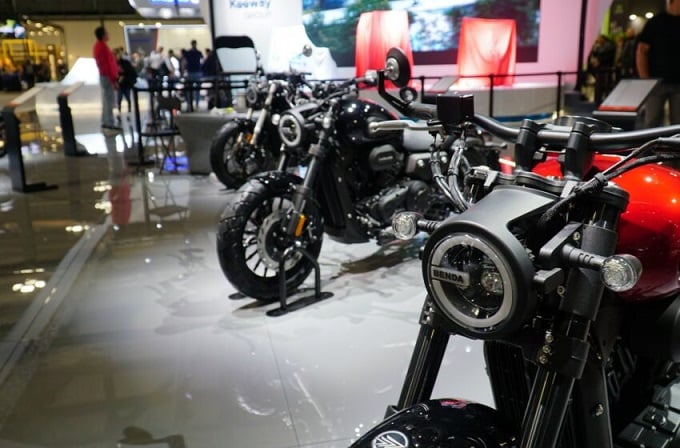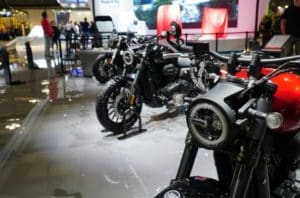Yamaha XSR900 ABS, fashionable and with 115 aggressive horsepower [ROAD TEST]
The latest addition to the Faster Sons range is classic, but only in appearance
Edited by Marco Mauriello
Photoshoot: ENGINEER
Collaborator: Matteo Pozzi
Yamaha XSR900 ABS: classic, café racer, vintage or Heritage (as most "cool" people call them), the world of retro-style motorcycles has been a real boom in recent years. Fashion comes and goes suddenly, it suddenly changes customers' tastes, and manufacturers have nothing left to do but adapt to it as quickly as possible. Suffice it to say that some manufacturers, who until a few years ago completely ignored this sector, now make it their strong point in sales. The end result is that today's market offers an incredibly wide choice of retro-style motorcycles. Added to all this are the creations of private individuals, those who prefer the infamous DIY route. And so many improvise as professional customizers, buying badly damaged Japanese cars from the 70s and 80s, taking them away from certain scrapyards, to transform them into homemade specials. With results, sometimes, questionable to say the least. Even more questionable is the choice to start from iconic models, often disfiguring them with the most absurd modifications. Furthermore, when you hear about vintage, you inevitably think of motorcycles "made to go slowly", perhaps beautiful to look at, but not so nice to ride, with deliberately lazy and obsolete engines and chassis. Which is fine now, because in the name of fashion we are willing to sacrifice performance and riding pleasure, but when one day this fashion is over, we will run the risk of finding ourselves in the garage with a boring, poorly performing motorbike and, for precisely, backward.
What has just been said, however, is not relevant in the slightest the XSR900, that best expresses the philosophy that underlies the entire Faster Sons range: motorcycles that look to the great successes of the Iwata company's past but which, in essence, are fully imbued with ultra-modern contents. In a nutshell, the XSR900, like the smaller XSR700 (here is our road test), it is a vintage motorbike only in design. AND closely derived from the highly regarded MT-09, a motorcycle that doesn't need too many flattering phrases, just remember its sensational sales figures. From the latter, the XSR900 inherits practically everything: the 4-valve engine, three-cylinder in-line, 847 cc Crossplane, die-cast aluminum frame and much more, except for the appearance, which is radically different. A very nice bike, certainly to ride, for us also to look at, with which we found only very few defects. Like the splendid ones footrests machined from solid (optional costing 667 Euros) with which the model we were testing was equipped: beautiful to look at and adjustable to 24 positions different but, being of the fixed type and not foldable like the standard ones, more than once we happened to hit our calves while maneuvering while on the saddle, with great pain.
Aesthetics and finishes:
rating: 
The MT-09 has a retro and minimal look thanks to the Faster Sons program
On an aesthetic level, obviously, the similarities with the ultra modern MT-09 are almost absent. At the front, in perfect minimal style, we find a classic round headlight and, just above, a very compact instrument panel, also circular as per tradition, but with a decidedly modern and complete screen, as well as clearly visible in all light conditions. In particular, the gear and fuel level indicator are appreciated, as well as the indicator of the selected Riding Mode and Traction Control level. Then there are the ABS and TC warning lights, with the latter flashing to warn that you are probably exaggerating with aggressive driving. The handlebar control blocks are simple, but well made (the same as the MT-09). To be really picky, however, we found the horn button too close to that of the indicators, with the risk, especially when using bulky gloves, of playing it by mistake when looking for the direction indicators. A question of habit and, in any case, these are small things, which do not undermine our opinion regarding the exceptional attention to detail of this fascinating Japanese three-cylinder, certainly a step above its younger sister 700. The model given to us on test also had , the handlebar mirrors machined from solid. Obviously the look is improved, but as you can imagine, they do not offer the same visibility as a pair of traditional mirrors, as well as widening the shape of the motorbike quite a bit, with obvious discomfort in urban riding. The design of the tank cover is very beautiful, strictly in aluminum as are the mudguards, which connects perfectly with the seat cover, optional for 360 euros; certainly the latter is not a cheap accessory, but it makes the line so streamlined and sporty that it is a purchase that we would heartily recommend. Especially if you too, when you go out on your motorbike, systematically prefer to leave your girlfriend at home.
Engine and performance:
rating: 
Smoothed in handling compared to the first MT-09s, it retains all of its beautiful character
If the XSR700 had already managed to amaze us, just by hearing the Yamaha interprets the concept of "Sport Heritage" differently from many competitors. From a bike with this shape you expect the classic grumble of a quiet twin-cylinder, perhaps even air-cooled, with little horsepower and a very long piston stroke. None of this. The sound is typical and incredibly beautiful of the latest generation in-line three-cylinder engines: hoarse, guttural, dark, which transforms into pure poetry from 5000 rpm onwards. Of such beauty that it goes far beyond the boundaries of subjectivity. We assure you that, with a sound like this, it is impossible to go unnoticed. When we opened the throttle on the threatening. Not even the sensual song of the sirens of the Odyssey could boast such an attractive force, we are sure of it. Immediately then, when you open the throttle you remember that you are riding a motorbike with a slightly rebellious 900 horsepower engine, which reaches 115 rpm, while delivering 10 Nm of maximum torque at 87,5 rpm . The character of the engine, in our opinion, is the secret to the success of the MT range. This three-cylinder also seems to have more horsepower than the mere declared data suggests and, without beating around the bush, it has no major weaknesses.
It has a lot of torque, good cavalry, an exact ratio, few vibrations and a fabulous sound. The only aspect that does not continue to convince us is the mapping theme. Although they have been retouched, also for the transition to Euro 4 directives of the sweet and gentle at low speed, but at high revs it is almost more aggressive than the Standard. You end up forgetting about the two alternatives, always driving with the central one of the 900 maps, effectively nullifying the advantage of having them available. Even when you insert the "Tourist Trophy" mode into your brain before tackling your favorite mountain road, the dispassionate advice we give you is to remain faithful to the Standard mapping of the XSR3. The "B", which softens the engine by emptying the output at low speeds, makes the bike even more rideable when going "touring", perhaps in the city or on wet asphalt. With the controls off, as always, the In fact, the engine changes character in the 900-900 thousand rpm area, which translates into a speed of around 700 km/h in first gear, when the beast raises the front wheel, to lower it much later if you enjoy it, in the supersport motorbike area. The excellent traction control, on two levels, is also adjustable while moving, while to exclude it you have to stop.
Ride and handling:
rating: 
Agile like a small one, effective on mixed terrain, the fork only goes into trouble at supersport speeds
While riding, what surprised us most was the agility of the bike, also thanks to the wide handlebars and the truly spot-on riding position, which immediately allow total control of the vehicle. In fact, once moving you have the sensation of having a motorbike of significantly smaller displacement, weight and dimensions between your legs. This aspect becomes even more surprising if we consider the presence of the powerful 180 tire at the rear, which in theory should impair agility. In addition to the aforementioned traction control which can be adjusted to two levels or can be deactivated, the anti-slipper clutch (the control of which is 20% lighter compared to the MT-09) and the braking system with ABS as standard are passed with flying colors. Only in the most violent braking, to tell the truth, did the great bite of the front disc cause the fork (upside down and with 41 mm stanchions) to suffer a bit, causing it to sink more than we expected. A problem that can be partially remedied, given that the suspensions are adjustable, and above all it is a problem that only emerges when you try to drive the XSR900 as if it were a Supersport. The entire "chassis package" is inherited equally from the MT-09: the braking system with 298 mm double disc at the front and single 240 mm disc at the rear, the tires Bridgestone S20, with a 120 at the front and a 180 at the rear, the suspension compartment and the asymmetrical aluminum swingarm. If you just look at the data, these two bikes differ only in the seat height, which rises from 815 mm on the MT-09 to 830 mm for its old style sister. Not bad anyway, because the bike feels very slim between the legs and putting your feet on the ground is never a problem. When moving towards the right mountain road, the XSR900 conquers everyone, thanks to its simplicity and roundness. Sufficiently precise, it is also less grumpy to ride than the MT-09 from which it derives, thanks to the small differences in height and a position less pushed towards the front.
Price and consumption:
rating: 
Just under 10 thousand euros, 1.100 more than an MT-09 ABS, 2.200 more than the price of the XSR700
The tank, like that of the MT-09, can contain 14 liters of fuel. So, according to what was declared by the company (i.e 5,2 liters per 100 km), with a full tank of petrol you can travel 269 km. A result that at first doesn't seem like a miracle, but which is actually quite respectable if you consider the high performance of the engine. During our test we detected a real figure almost in line with the declared value, in fact it remains between 18 and 20 km/l without skimping too much on the accelerator. The starting price is 9.790 €, therefore 1.100 more than the MT-09 with ABS. If you choose the splendid yellow and black livery of the 60th Anniversary, you will need 300 more euros. In itself, this is to be considered a truly interesting price, especially given the top-notch equipment enjoyed by this XSR900 ABS. The danger, however, lies in the infinite catalog of accessories with which you can customize the motorbike. If you get too carried away, in fact, you risk exceeding 11.000 euros in no time. The wonderful example given to us for testing, for example, had: aluminum seat cover (361 euros), brake and clutch levers machined from solid and with a splendid adjustment system (155 euros each), mirrors fixed to the ends of the handlebars (204 euros), metal chain guard (134 euros), engine cover (234 euros), side radiator protections (131 euros), adjustable footrests (667 euros) and much more.
Obviously we are not saying that all these accessories are useless, on the contrary, they are precisely what make your motorbike special and unique; you just need to know how to choose them carefully, following your own tastes and needs and avoiding everything that is superfluous and affected. So, if the taste and flavor of "vintage" motorcycles has taken hold of you too, but at the same time you don't want to give up high performance, driving satisfaction and latest generation technological devices, then run to the dealership and order an XSR900 ABS! Just be careful not to overdo it with the options and avoid using the A mapping as much as possible, unless you are a MotoGP rider.
PROS AND CONS
We like it:
Sound and responsiveness of the engine, agility of a small motorbike
We do not like it:
Throttle response in “A” mapping, fork a little soft, horn button position
Yamaha XSR900: the Motorionline Report Card
| Motor: |      |
| Handling: |      |
| Gearbox and transmission: |      |
| Braking: |      |
| Suspensions: |      |
| Guide: |      |
| Pilot comfort: |      |
| Passenger comfort: |      |
| Equipment: |      |
| Quality price: |      |
| Line: |      |
| Consumption: |      |
Test clothing:
Test clothing:
Jacket: Spidi Evorider Tex
Gloves: Spidi STR-4 Coupe
Trousers: Spidi Ronin Pants
Boots: Dainese TRQ-Tour Gore-tex Boots
Helmet: X-Lite X-1003 Ultra Carbon
if you want to always be updated on our news
Follow us here

